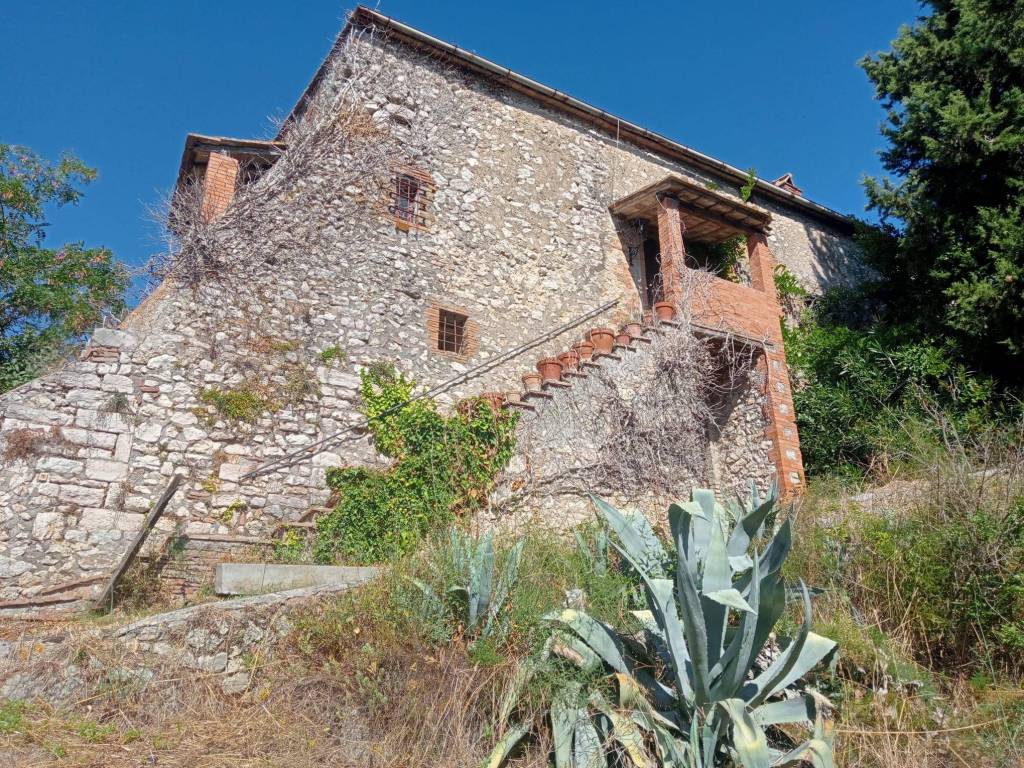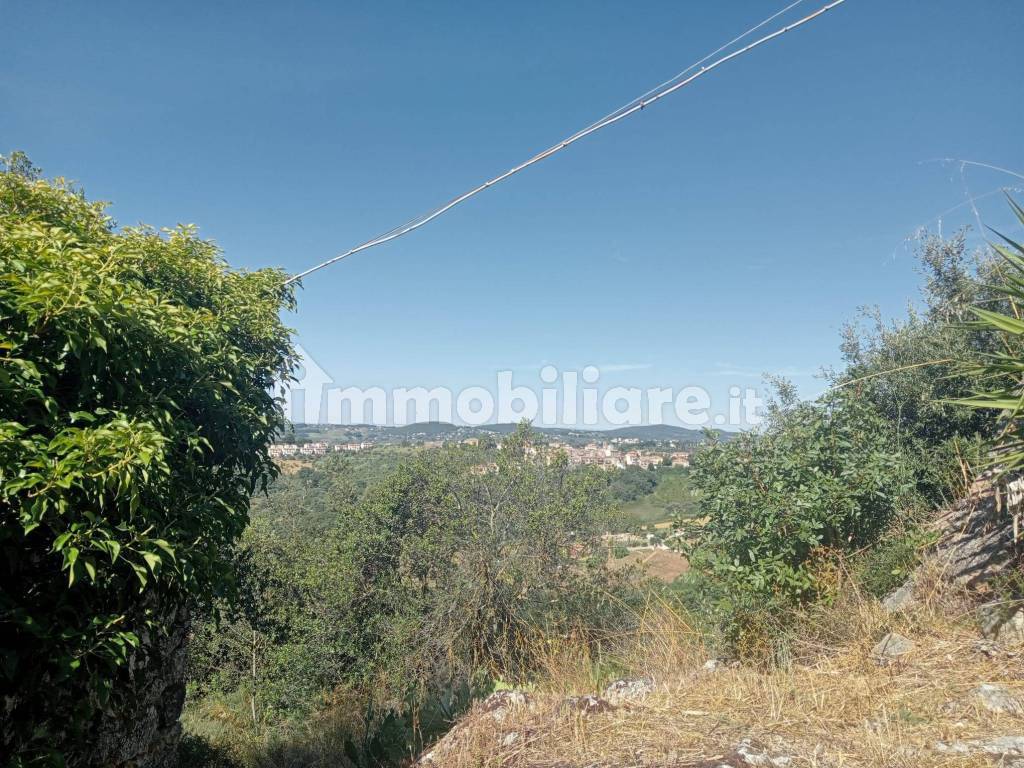
Farmhouse Strada di Camartana, Narni
NarniStrada di Camartana- € 170,000
- 5+
- 580m²
- 2
- No
Description
This description has been translated automatically by Google Translate and may not be accurate
Between Narni and Amelia, two characteristic Umbrian stone farmhouses, panoramic position, cellars and 2.8 ha of land.
Excellent solution for the creation of an accommodation business.
A stone's throw from the highway junction.
The area around Narni it was already inhabited in the Paleolithic, as attested by the findings in some of the caves that make up the territory. Around the beginning of the first millennium BC, populations of Apennine culture of Ideo-European origin, the Osco-Umbrians settled in the area, calling their settlement Nequinum.
In 300 BC the citadel returned to the interests of Rome, which had it besieged by the consul Quintus Appuleius Pansa, however, obtained unsuccessful results given his impervious position[4]. It took over a year to accomplish the feat, which occurred in 299 BC thanks to the betrayal of two local people who allowed the Romans to enter the walls. It thus became a Roman colony and a strategic center along the Via Flaminia. To punish the support given to the Gauls, and considering Nequinum a bad omen (in Latin, nequeo means "I cannot", and nequitia means "uselessness".), the Romans changed the name of the city to the Latin of Narnia[5][6 ][7], from the name of the nearby river Nar, the current Nera.
There is not much information relating to that period, but it is thought[8] that the city may have played a role of some importance during the of the first two Punic Wars. Along the Nera river, near the hamlet of Stifone, where the port of the Roman city was once located, the archaeological site of what appears to be a Roman shipyard was recently identified.[9]. Furthermore, there is information about the ancient navigability of the Nera river in Strabo[10] and Tacitus[11]. The passage in which the consul Gnaeus Calpurnius Piso, in 1919, decided to embark in Narni with his wife Plancina in order to reach Rome without arousing suspicion is known. It became a Municipium in 90 BC. In the year 30 AD, Nerva, Roman emperor, was born there. The mention of Narnia by Tertullian, in the Apologeticum, in a list of "false gods" drawn up in the first century is from the early Christian era, as the city was the ancient home of the god Visidianus (Narnensium Visidianus).
It is not known with certainty when the city of Narnia changed its name to Narni, but this probably happened gradually over time starting from the 13th century[citation needed] and then became effective after the French revolution[citation needed], although until the end of the 19th century, inscriptions with the ancient name of Narnia were still found in tombstones and official writings[without source].
The writer Walter Hooper, who was among other things secretary and biographer of CS Lewis, author of The Chronicles of Narnia, he also discussed the origins of the name "Narnia" several times in his books as can be seen for example on page 306 of his book co-written with Roger Lancelyn Green: CS Lewis: A Biography, published in 2002. Below is an extract which reports what Lewis said to Hooper:
«When Walter Hooper asked CS Lewis where he had found the word Narnia, Lewis showed him his atlas Murray's Small Classical Atlas, ed. GB Grundy (1904), which he had bought when he was reading the classics with his tutor Kirkpatrick at Great Bookham [1914-1917]. On page 8 of this atlas there is a map of Italy with inscriptions in Latin. Lewis had pointed out the name of a small town called Narnia, simply because he loved the sound of the word. Narnia - or "Narni" in Italian - is located in Umbria, halfway between Rome and Assisi.»
Symbols
A Narnese legend has it that, in medieval times, in the territory between Narni and Perugia there was a Griffin, against the which the two cities, at war with each other, had united. Once killed, Perugia kept the bones of the Griffin (white) and Narni the skin (red) as a trophy. For this reason the Griffin of Perugia is white and that of Narni is red.
Coat of Arms
The coat of arms of the city of Narni, granted with the Presidential Decree of 12 October 1951, has the following blazon:
«of silver to the red griffin, language of the same."--7dcf76aa68d7ec52ffe547d62674f13a!
Excellent solution for the creation of an accommodation business.
A stone's throw from the highway junction.
The area around Narni it was already inhabited in the Paleolithic, as attested by the findings in some of the caves that make up the territory. Around the beginning of the first millennium BC, populations of Apennine culture of Ideo-European origin, the Osco-Umbrians settled in the area, calling their settlement Nequinum.
In 300 BC the citadel returned to the interests of Rome, which had it besieged by the consul Quintus Appuleius Pansa, however, obtained unsuccessful results given his impervious position[4]. It took over a year to accomplish the feat, which occurred in 299 BC thanks to the betrayal of two local people who allowed the Romans to enter the walls. It thus became a Roman colony and a strategic center along the Via Flaminia. To punish the support given to the Gauls, and considering Nequinum a bad omen (in Latin, nequeo means "I cannot", and nequitia means "uselessness".), the Romans changed the name of the city to the Latin of Narnia[5][6 ][7], from the name of the nearby river Nar, the current Nera.
There is not much information relating to that period, but it is thought[8] that the city may have played a role of some importance during the of the first two Punic Wars. Along the Nera river, near the hamlet of Stifone, where the port of the Roman city was once located, the archaeological site of what appears to be a Roman shipyard was recently identified.[9]. Furthermore, there is information about the ancient navigability of the Nera river in Strabo[10] and Tacitus[11]. The passage in which the consul Gnaeus Calpurnius Piso, in 1919, decided to embark in Narni with his wife Plancina in order to reach Rome without arousing suspicion is known. It became a Municipium in 90 BC. In the year 30 AD, Nerva, Roman emperor, was born there. The mention of Narnia by Tertullian, in the Apologeticum, in a list of "false gods" drawn up in the first century is from the early Christian era, as the city was the ancient home of the god Visidianus (Narnensium Visidianus).
It is not known with certainty when the city of Narnia changed its name to Narni, but this probably happened gradually over time starting from the 13th century[citation needed] and then became effective after the French revolution[citation needed], although until the end of the 19th century, inscriptions with the ancient name of Narnia were still found in tombstones and official writings[without source].
The writer Walter Hooper, who was among other things secretary and biographer of CS Lewis, author of The Chronicles of Narnia, he also discussed the origins of the name "Narnia" several times in his books as can be seen for example on page 306 of his book co-written with Roger Lancelyn Green: CS Lewis: A Biography, published in 2002. Below is an extract which reports what Lewis said to Hooper:
«When Walter Hooper asked CS Lewis where he had found the word Narnia, Lewis showed him his atlas Murray's Small Classical Atlas, ed. GB Grundy (1904), which he had bought when he was reading the classics with his tutor Kirkpatrick at Great Bookham [1914-1917]. On page 8 of this atlas there is a map of Italy with inscriptions in Latin. Lewis had pointed out the name of a small town called Narnia, simply because he loved the sound of the word. Narnia - or "Narni" in Italian - is located in Umbria, halfway between Rome and Assisi.»
Symbols
A Narnese legend has it that, in medieval times, in the territory between Narni and Perugia there was a Griffin, against the which the two cities, at war with each other, had united. Once killed, Perugia kept the bones of the Griffin (white) and Narni the skin (red) as a trophy. For this reason the Griffin of Perugia is white and that of Narni is red.
Coat of Arms
The coat of arms of the city of Narni, granted with the Presidential Decree of 12 October 1951, has the following blazon:
«of silver to the red griffin, language of the same."--7dcf76aa68d7ec52ffe547d62674f13a!
Information
- other features
- FireplaceOptic fiberInternal exposureExternal exposureClosetBalconySingle tv systemWindow frames in glass / wood
Features
- Reference and listing Date
- 78824 - 08/23/2023
- contract
- Sale
- type
- Farmhouse | Full ownership | Medium property class
- surface
- 580 m² - See detail
- rooms
- 5+ (3 bedrooms, 5 others), 2 bathrooms, kitchen diner
- floor
- Ground floor
- total building floors
- 1 floor
- other features
- FireplaceOptic fiberClosetBalconySingle tv systemWindow frames in glass / woodDouble exposure
Expenses
- price
- € 170,000
- condominium fees
- No condominium fees
Energy efficiency
- year of construction
- 1800
- condition
- To be refurbished
- heating
- Independent, with radiators, powered by lpg
- Energy Efficiency
- G≥ 175 kWh/m² year
Additional options
Livia Mearelli























